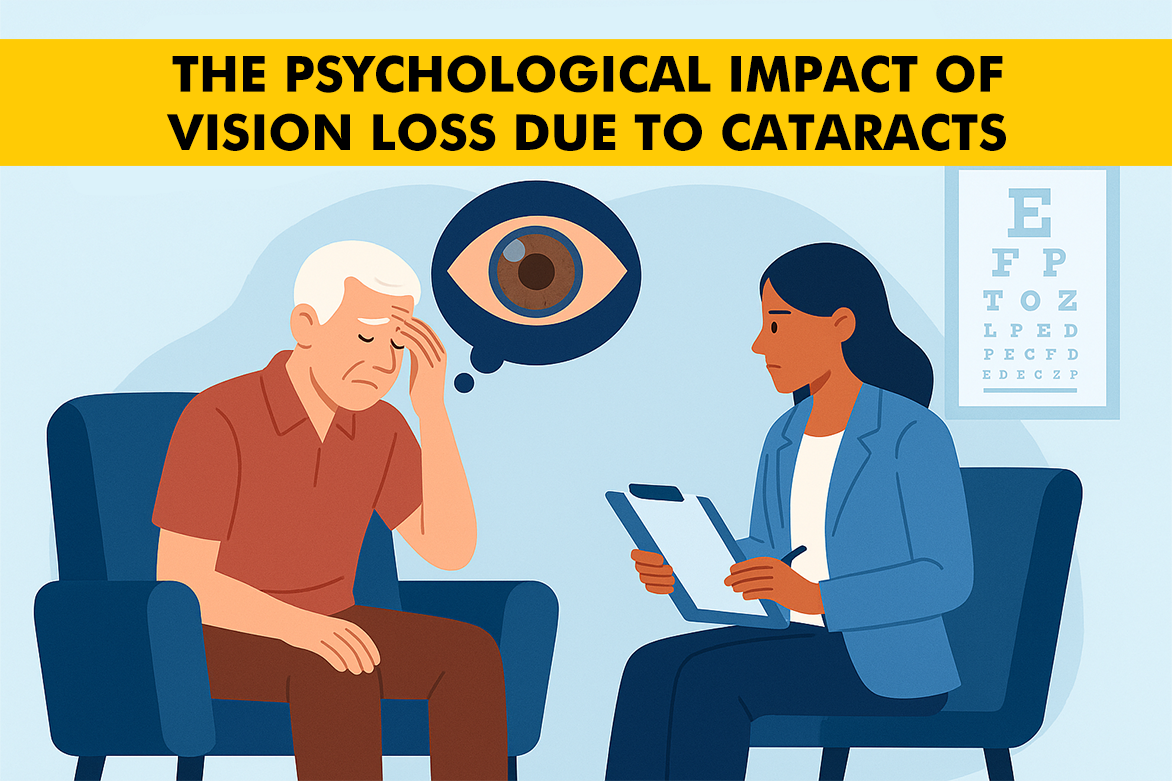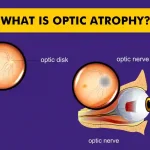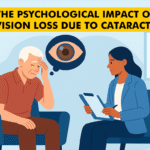Table of Contents
- Understanding Cataracts and Vision Loss
- Emotional Repercussions of Living with Cataracts
- Social Isolation and Its Consequences
- Coping Mechanisms and Psychological Support
- The Role of Healthcare Providers in Mitigating Psychological Impact
- How Cataract Surgery Improves Quality of Life
- What to Expect from the Cataract Vision Restoration Procedure
- Conclusion
- FAQs
Vision shapes every moment of our daily lives, allowing us to move independently, connect with people, and enjoy everything from the written word to the colors of nature. When cataracts cloud the clarity of that vision, the repercussions extend far beyond the physical, impacting mood, confidence, and one’s entire approach to life. While many are aware of the visual symptoms of cataracts, not enough attention is paid to how these changes affect our psychological well-being.
In this blog, we explore a side of cataracts that matters just as much as clarity: how vision loss shapes the mind and spirit, and the crucial measures you can take to stay supported and resilient.
Understanding Cataracts and Vision Loss
Cataracts develop when the clear lens in the eye becomes cloudy, scattering light and making day-to-day tasks challenging. This is not just a problem for reading or driving—cataracts affect face recognition, navigating stairs, and maintaining one’s sense of self. The gradual, often invisible onset of vision loss can be distressing: every activity becomes more taxing, and routine independence begins to slip away.
Key Implications:
- Increased risk of falls and accidents
- Avoidance of hobbies that require vision (sewing, gardening, watching TV)
- Trouble keeping up with new technology or reading medication labels
- Loss of confidence outdoors or in unfamiliar environments
Emotional Repercussions of Living with Cataracts
The psychological burden of losing sight is real and underappreciated. More than just frustration, it can trigger deep-seated emotions:
- Anxiety: Fear about the progression of cataracts or the prospect of permanent blindness
- Depression: Reduced independence may lead to persistent sadness, hopelessness, or lack of interest in once-loved activities
- Self-esteem issues: Embarrassment over asking for help, struggling in social settings, or feeling “older” than one’s years
- Irritability or anger: Withdrawing from social groups and becoming easily frustrated with minor setbacks
Case Example: Mr. Rao, once a confident commuter and avid reader, describes feeling “invisible,” reluctant to socialize because he struggles to see facial expressions or follow group conversations.
Social Isolation and Its Consequences
Social withdrawal is one of the most pervasive effects of cataract-related vision loss.
- Reduced participation: Skipping family gatherings or community events out of fear of stumbling or not recognizing faces
- Loneliness: Isolation can accelerate feelings of sadness and even contribute to cognitive decline
- Relationship strain: Frustrations or misunderstandings between individuals with cataracts and their caregivers/family
Coping Mechanisms and Psychological Support
Maintaining mental health begins with adapting to new challenges and seeking support. Effective Strategies:
- Open communication: Speak with family, friends, and healthcare professionals about worries and difficulties
- Professional counseling: Therapy provides a safe space for adapting to loss and developing coping tools
- Peer support groups: Sharing experiences with others facing vision loss reduces stigma and creates a powerful sense of belonging
- Occupational therapy: Learning new skills or using assistive devices helps restore confidence in self-care and mobility
- Mindfulness and relaxation: Yoga, meditation, and breathing exercises can ease anxiety and build emotional resilience
Explore local and online resources—from telephone hotlines to vision loss organizations—so that emotional support is never out of reach.
The Role of Healthcare Providers in Mitigating Psychological Impact
Ophthalmologists, optometrists, and primary care physicians must understand the mental and emotional needs of their patients. Best practices for providers:
- Proactive communication: Ask about mood, anxiety, sleep, and daily struggles as routinely as measuring visual acuity
- Integrated care: Build multi-disciplinary teams including mental health professionals and rehabilitation experts
- Education for families: Offer workshops and materials to help loved ones understand what the patient is experiencing
- Early intervention: Provide information about support groups or counseling while patients are still adjusting
Checklist for Patients to Discuss With Providers:
- What resources are available for coping with vision loss?
- Should I consider a mental health consultation?
- How can my family be more involved in my care?
- When does depression or anxiety require medication or therapy?
- How can I safely adapt my home environment?
How Cataract Surgery Improves Quality of Life
Cataract treatment isn’t just a procedure—it’s often a rebirth. Restoring sight can dramatically uplift mood and reestablish independence. What research shows:
- Significant improvement in mental well-being, energy, and day-to-day satisfaction post-surgery
- Higher engagement in social, professional, and recreational activities
- Reduced rates of depression and anxiety following sight restoration
- For many, vision restoration allows safe driving, reading, cooking, and active travel again
What to Expect from the Cataract Vision Restoration Procedure?
Cataract surgery today is remarkably efficient and safe.
- Procedure basics: In less than 30 minutes, the cloudy lens is removed and replaced with a crystal-clear artificial one
- Recovery: Most patients experience noticeable visual improvement within a few days; complete healing may take weeks
- Aftercare: Simple precautions, regular eye drops, and brief follow-up appointments ensure safe recovery
- Emotional transformation: Most patients experience major boosts in self-esteem and optimism as vision clarity returns
Conclusion
Vision loss caused by cataracts can turn once-simple tasks into enormous challenges, taking a toll not just on the eyes but on emotional and social well-being. Recognizing these far-reaching effects empowers individuals, families, and healthcare teams to deliver genuinely holistic care. With early intervention, proactive support, and sight-restoring surgery, there is not just the hope of clearer vision, but a brighter, more connected, and fulfilled life beyond cataracts.





